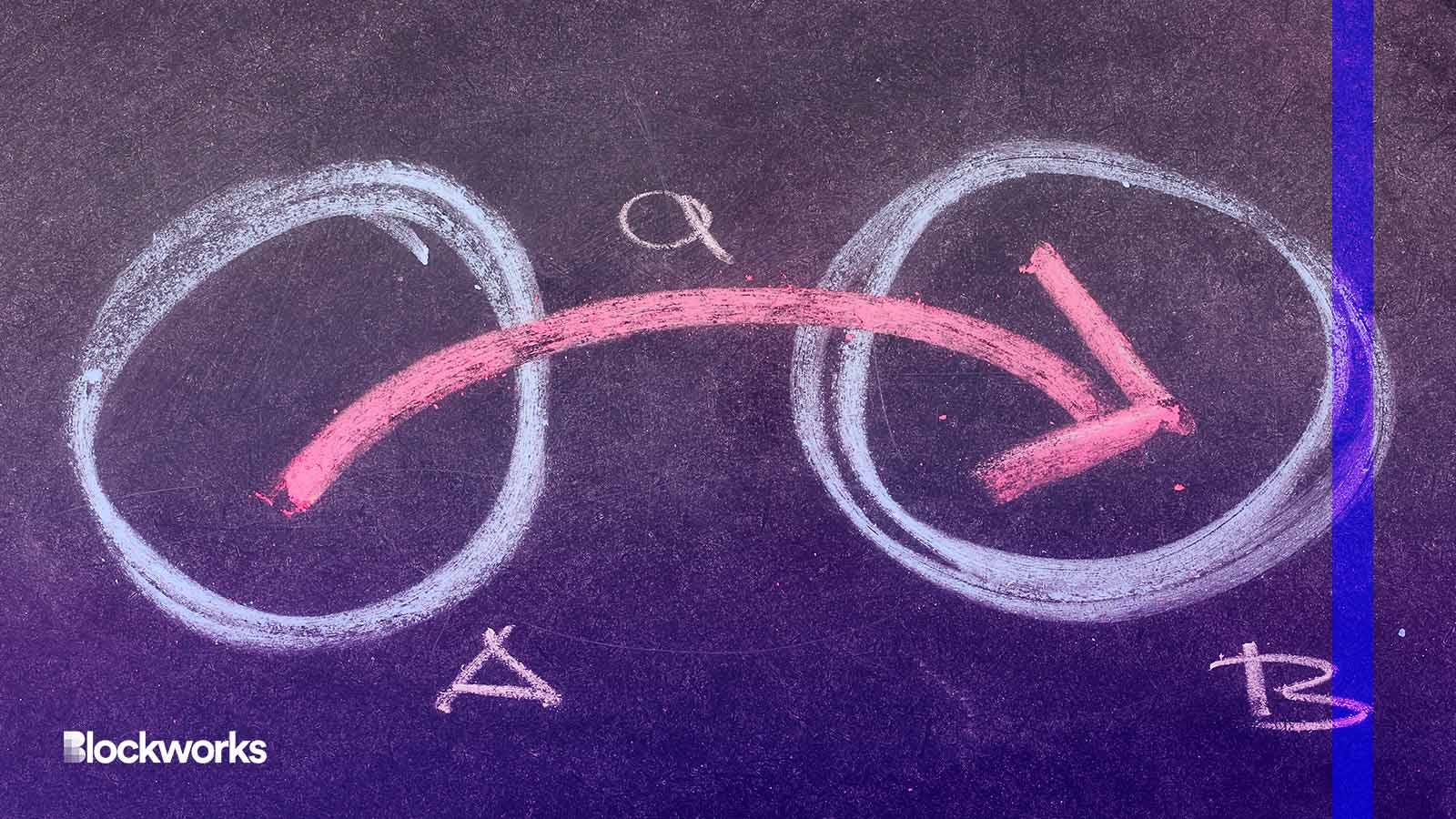Rollup Sequencers Are Centralized — And That’s Fine
The fastest way from point A to point B in blockchain often involves resorting to a centralized service at some stage

xpixel/Shutterstock modified by Blockworks
Centralization: the hideous enemy of freedom and progress in the realm of distributed ledger technology. It often rears its head as soon as developers encounter scaling challenges.
In decentralized protocols, the fastest way to move from point A to point B often ironically involves resorting to some sort of centralized mechanism. Forget ideals like censorship-resistance and independence, devs might cry out, we just want this thing to be quick and cheap!
The quest for further decentralization in the blockchain space continues, but for some elements, Stephane Gosselin says, centralization might not be such a bad thing, after all.
The former co-founder and chief architect of Flashbots and founder of Frontier Research spoke to Blockworks on the Bell Curve podcast about layer-2 rollups and how centralized sequencers might not be the problem that many fear.
All rollup sequencers are centralized
Let’s get one fact out of the way to begin with: All layer-2 rollups on Ethereum — every single one of them — use centralized sequencers.
The sequencer’s job is to process and order transactions into blocks to be added to the chain. It’s cheaper, faster and easier for rollup providers to maintain their own proprietary centralized sequencer system than to farm out the job.
“I’m still not convinced that that’s a bad thing,” says Gosselin, “I don’t think it’s a done deal to say that, actually, first in, first out sequencers on a layer-2 are a bad thing.”
The usual argument against rollup centralization, Gosselin says, is that it creates a “latency game” that draws centralization toward a specific geographic region. Being concentrated in a particular place leaves a rollup susceptible to censorship and oppressive regulation wherever the rollup is deployed, Gosselin says.
“But, still, the question is like, is that actually bad?”
Ethereum has been designed, Gosselin says, as a maximally decentralized layer-1 with relatively little economic activity on the base layer. Its goal is to settle data without what he describes as “contention” — demand for settling on a specific position — which takes place inside layer-2s instead.
“If you have an architecture where the layer-1 is only settling data blobs and there isn’t contention, and you have all the activity inside of layer-2s, it reduces the centralization pressure on the layer-1 significantly.”
Cross-chain messaging to the rescue
Cross-chain messaging could save the day, Gosselin says, providing censorship-resistance between layers when needed. “You have some way to push messages out from the layer-2 back into the layer-1, or maybe for it to be interpreted by some other spin-up of that layer-2 somewhere else.”
Through a messaging mechanic like IBC, Gosselin says layer-2s would remain censorship-resistant and non-custodial because individual rollup participants can “exit their state and bridge it over to some other roll-up in some other jurisdiction.”
Host Mike Ippolito points out that in such a situation, users would experience significant “market disruption.”
“There would be a period of time where we’d have to migrate the assets and everything down into the main chain and back up onto another rollup.”
The looming threat of disruption, Ippolito says, could “prevent TVL and activity from migrating up to the rollups as much as they otherwise would.”
Gosselin concurs, noting, “the other argument is, well, if you have some way for the state to be able to exit back to the layer-1,” he says, “then you have a lot of contention on the layer-1.”
“And so you have all the same centralization pressure on the layer-1,” he says.
“I don’t think, by any means, it’s perfectly solved.”
“At the end of the day, yes, you’re going to have trade-offs in these different execution environments,” Gosselin admits, but ultimately, app developers just want an interface for connecting and automatically deploying their services.
“These shared sequencers or decentralized block builders, cross-chain bridges, are all in the same game of trying to build and provide those services,” he says.
“There’s so many different ways to build these things — and it’s not clear to me where it’s going to go.”
Get the news in your inbox. Explore Blockworks newsletters:
- The Breakdown: Decoding crypto and the markets. Daily.
- 0xResearch: Alpha in your inbox. Think like an analyst.






